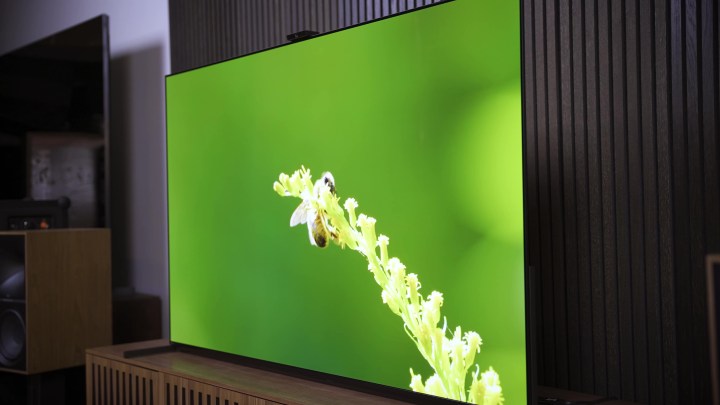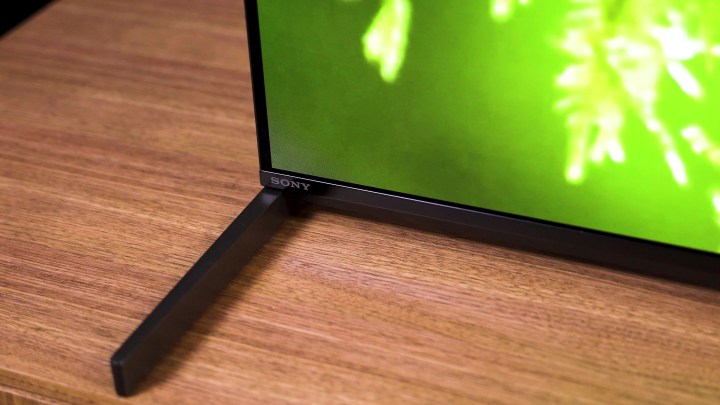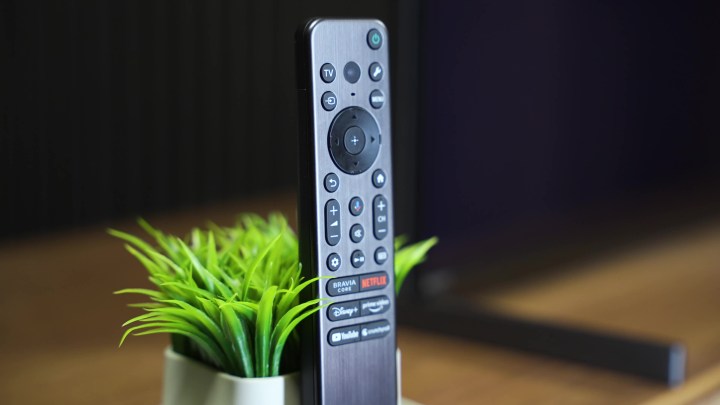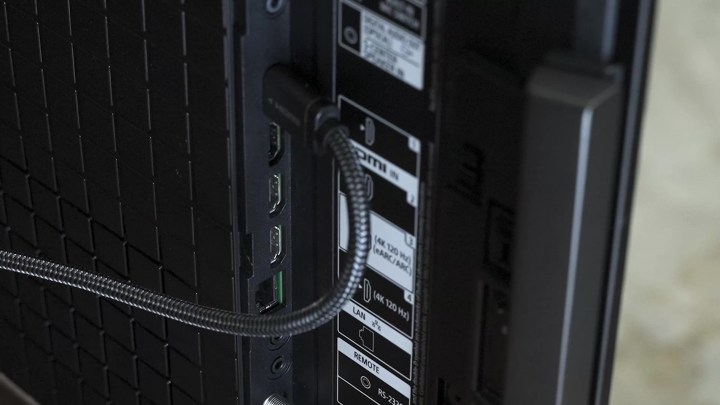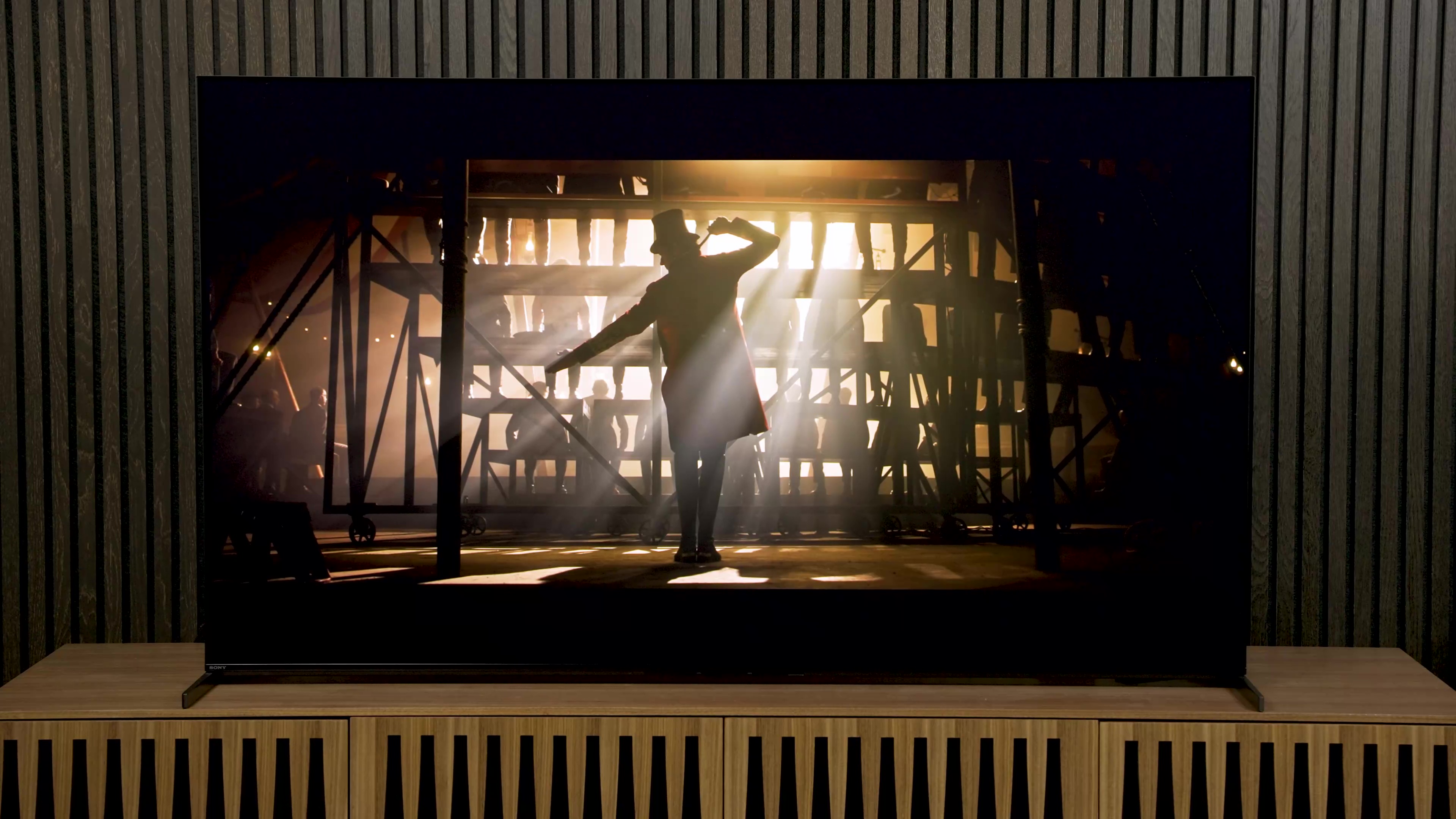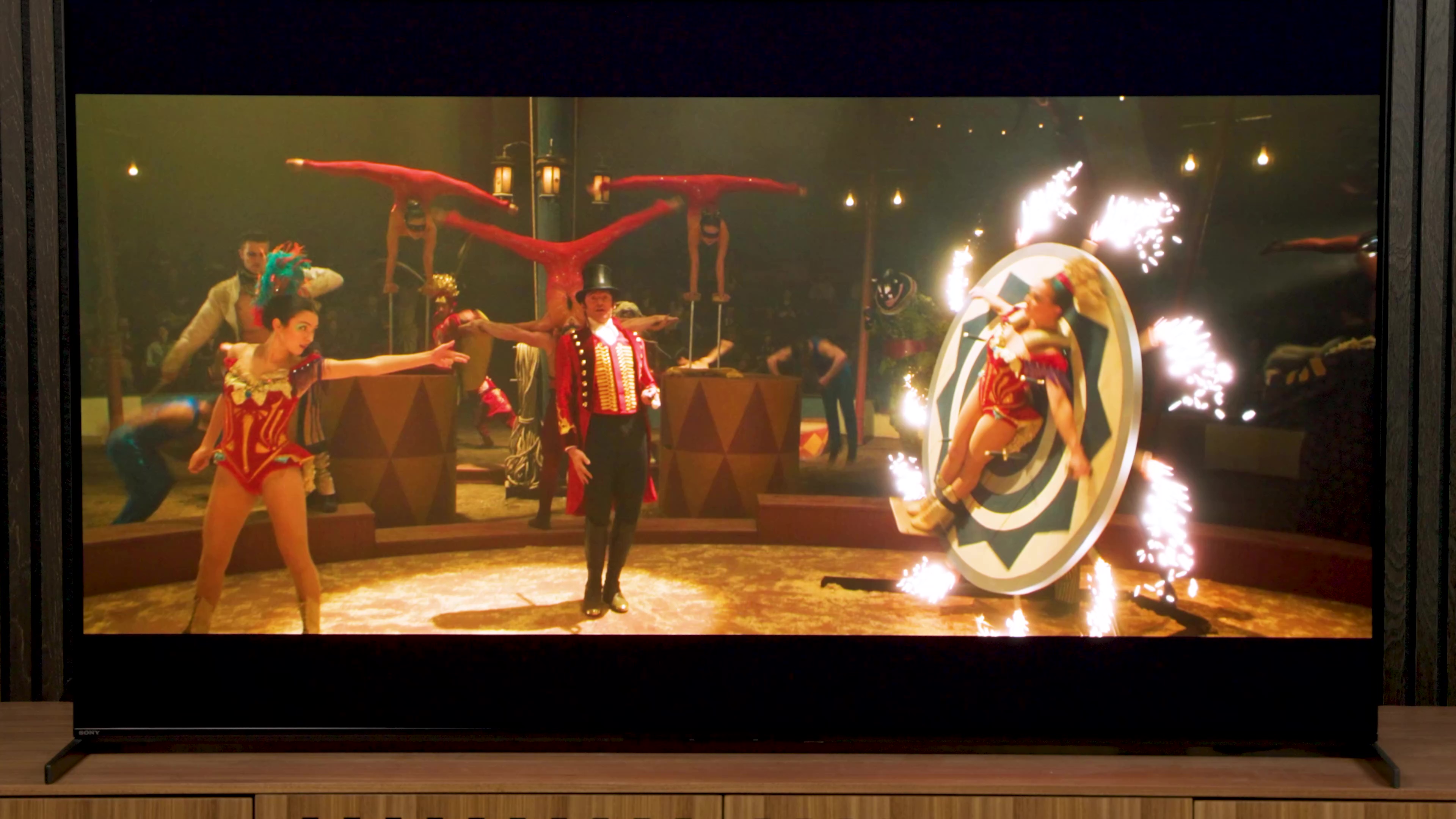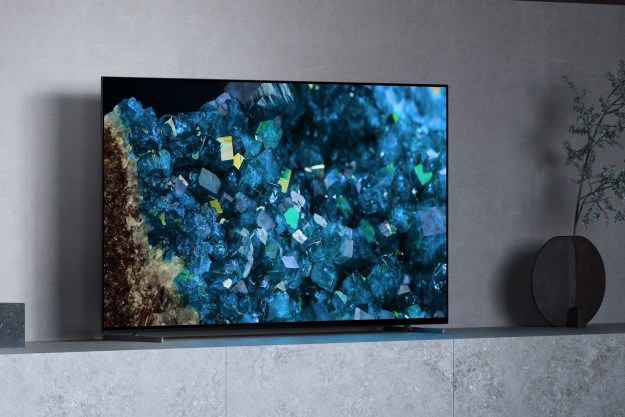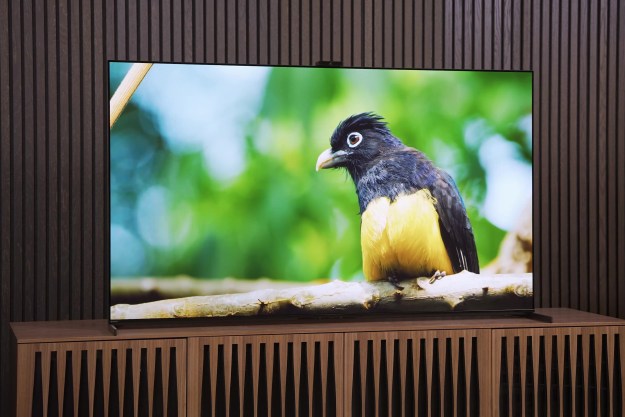
- Outstanding color accuracy and brightness
- Excellent contrast and luminance
- Great sound
- Gorgeous game mode picture quality
- Incredibly good upscaling
- Some deep features not available at launch
Are you ready for this? The Sony A95L QD-OLED is a 10. Five out of five stars, my friends. It is now the best TV I’ve ever reviewed.
Stick with me, because the rest of this review is going to explain why.
First, note that I did not say a “perfect 10.” That’s because there is no perfect TV — and, frankly, I hope there never will be. Because if we were to reach perfection now, we’d have nowhere to go, would we? That sounds like a boring life to me.
Perfection, however, is not among the list of qualifiers for me to give out a 10, which, if you weren’t already aware, is something I do extremely rarely. The Samsung S95B managed to get one, as did this TV’s predecessor, the A95K — and the A95L continues this tradition.
So what does it take to get a score of 10 from me? Well, the A95L does it, so I’m going to show you.
Video review
What’s new?
The A95L is very well-built, and the remote feels substantial. But it’s the new interface, built atop Google TV, that I really love. I know my perspective on the interface is skewed because I’m a reviewer and I’m rooting around in this UI way more than the average consumer. Still, I think folks are going to love it. It’s highly graphical, finding what you want to adjust is easy, and it’s just flat-out way more fun to interact with than competing interfaces.
Under the hood, we’ve got Sony’s very best processor and the second-gen QD-OLED panel made by Samsung Display.
- 2. Sony A95L
The only potential letdown isn’t that the TV only has two HDMI 2.1 ports — personally, I don’t ever need more than two. The problem is that the A95L shares one of those two HDMI 2.1 ports with the eARC port. And as someone who uses the eARC port to output to my audio system, that means that I either really only get one HDMI 2.1 port. So I have to choose whether to plug in my Xbox Series X or my PlayStation 5 — or I have to use an HDMI 2.1 8K 60 switcher. Problem solved, but I really wish the 4K 120 ports were separate from the eARC port.
Series and size details
While we reviewed the 65-inch (XR65A95L) model, our review also applies to the 55-inch and 77-inch models in the Sony Bravia XR A95L Series.
| Screen Size | Model Number | MSRP |
| 55-inch | XR55A95L | $2,800 |
| 65-inch | XR65A95L | $3,500 |
| 77-inch | XR77A95L | $5,000 |
Best-sounding TV?
Going off the experiences I’ve had so far this year, the A95L is far and away the best-sounding TV I’ve tested. It’s actually got presence, dynamics, stereo effects, and punch — all with the built-in speakers. Yes, a TV that has some punch! You’re going to pay more for a Sony A95L than you will a Samsung S95C, for example, but some of that money goes to the audio system, and I’m all for it. But I also know a lot of people are going to connect external audio anyway, so maybe that’s not a big deal for you. But don’t forget, there are speaker level inputs, so you can use this TV’s onboard audio as a center channel speaker if you’re using an AV receiver.
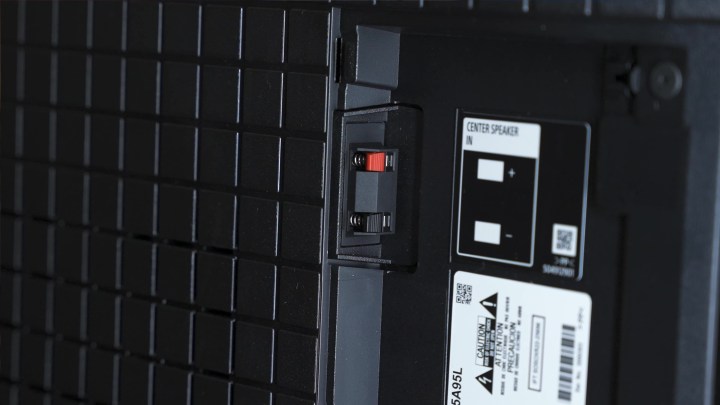
I’m about to get to picture quality, but let me just sum up the overall A95L user experience as exemplary.
I’ve not noted any quirks with how individual apps behave, in the way I have with some of the other TVs I’ve reviewed this year. It’s just rock solid and it feels like it’s going to last for a long time.
Brightness/ABL
The truth is that I didn’t need to take measurements to know the A95L is my favorite TV ever. But I took them anyway, because no TV review would be complete without Numbers for Nit Nerds!

We’ll start with peak brightness because we love to obsess over that one. Measurements from both a 10% and 18% window, as well as the Spears & Munsil HDR highlight test pattern, came in at 1,350 nits. Now, a reminder: that’s for peak white. That doesn’t tell us the story about color brightness, which is outstanding on this TV. Full-screen brightness is just over 250 nits, and I know you’re all wondering about Auto Brightness Limiter, often referred to as ABL, which is meant to protect the TV from burn-in and increase its longevity. Good news: ABL is not at all aggressive on this TV.
When viewing a full-field white slide being held for several minutes, what we see is that the TV holds steady for nearly 60 seconds. And when it does start to dim, it dims slowly, in barely noticeable increments. It isn’t until we reach the 3-minute point that most folks would be able to notice the TV has dimmed.
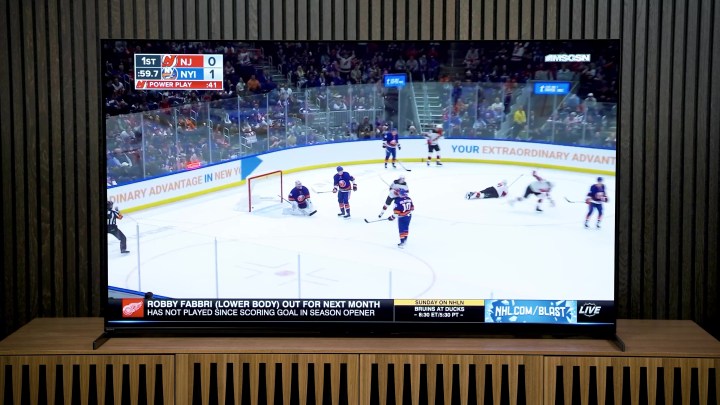
The thing is, those results were obtained using a full-screen white slide, which is a scenario that will never be replicated at home. The closest in-home scenario probably would be watching ice hockey. So, I put on some hockey and was not able to observe any dimming while there was action on-screen. Only when pausing the image did the TV’s brightness limiter kick in. And when action resumed, full brightness was restored.
Black levels and contrast
In its professional mode picture preset, I noted that the TV tended to raise black levels to preserve shadow detail, though enabling the “brightness preferred” setting had the opposite effect of making the darkest grays almost completely black. This is typical behavior of an OLED TV, as OLED compounds don’t like to illuminate until they’ve received a certain charge, and that charge tends to make them jump a couple of steps up in the lowest luminance areas. You can adjust this TV to taste, but I think the default professional mode settings are ideal for most applications. Black levels can be lifted in the TV’s gaming picture mode if more shadow detail is needed for situations where the gameplay goes into very dark areas and seeing everything lurking in the dark is essential.
White balance and color
Speaking of director’s intent, Sony’s usual mission is to make its consumer TVs match as closely as possible to its mastering monitors, those insane $30,000 little displays that get used by colorists and graders. Perceptually, the TV seems spot-on out of the box. But if you measure the white balance, it skews a bit blue. So a calibrator who wants to move this TV to meet the D65 white point will have to knock the blue down a little, and maybe just a touch of red. They are minor adjustments, but the results look stellar.

The color measurements were dead-on almost across the board. These are the best measurements I think I’ve ever taken. They’re very close to the 2022 A95K . And when we move to color gamut — specifically the lofty BT 2020 color space that’s very hard to achieve — the A95L is hitting between 86% and 89%, which I think might be the best I’ve seen. It’s certainly in the top 5%.
That’s because the A95L and its second-generation QD-OLED panel are capable of very high color purity and saturation at extremely high brightness levels.
Overall picture quality
One of this TV’s best traits is its high color purity and saturation at high color brightness levels. To show that off, I screened The Greatest Showman. The lighting in that movie is epic, and it makes for an excellent test case for TVs.
A couple of moments in the intro segment tell a lot (watch our video at the top of this review to follow along). First, we can see some subtle gradient changes in the lighting — I used Disney+ just to show that we aren’t seeing much color banding at all. And of course, there’s none on the 4K Blu-ray. Skipping ahead, to a moment where flames shoot out, you can see details from white, to yellow, to orange, to red. This is the kind of high-nit peak highlight that is prone to getting clipped and blown out by most TVs. A TV has to have a specific set of skills to pull this off well.
And then for peak white highlights, look at the sparklers in the wheel to see how, well, sparkling they are. This is really impressive peak highlight work. And because it is an OLED, all the pixels around the sparks that should be dark are, in fact, dark. That is high-level, detailed contrast. And I love it.
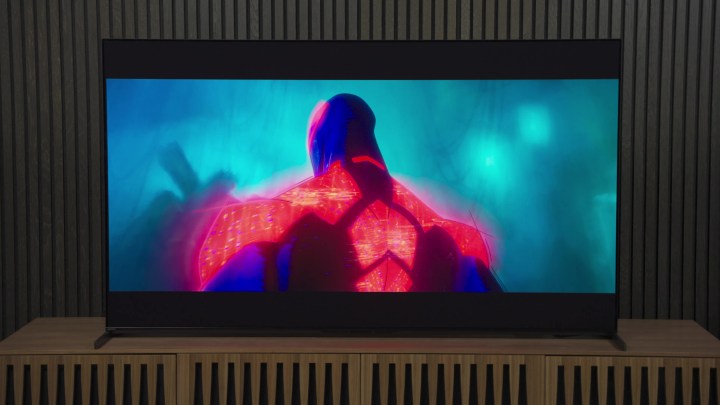
Spider-Man Across the Spider-Verse is a very colorful title with colors going into the BT 2020 color space, which we don’t see often, but filmmakers are starting to get playful and include colors in the home releases that we haven’t seen before. Yes, other QD-OLED TVs can do this, too. What makes the A95L different is that the colors are brighter than those on 2022 QD-OLEDs, and they are more accurate without a professional calibration than other QD-OLED TVs.
It’s really important that any premium TV you buy makes the stuff you watch day after day look really great. And, boy, does the A95L excel at that as well.
Upscaling and processing
I spend a lot of time talking about how no TV is a miracle worker when it comes to polishing the turds that are the SDR TV signals that we get from cable, satellite, and streaming live TV services. In fact, I’ve said that not even the best TV of the year can make live-streaming TV sports look as good as we want them to look.
The upscaling, signal cleanup, and cleanliness of the QD-OLED panel come together to make streaming sports look pretty freaking amazing.
But, dang it, I was wrong. The A95L does a better job than any TV I’ve tested, even with a streaming service like Sling TV, which is not known for its high bit rate or high bit depth streams. But this stuff has never looked so good. The upscaling, signal cleanup, and cleanliness of the QD-OLED panel come together to make streaming sports look pretty freaking amazing.
Now if you’re watching an old show that’s delivered in 480p or lower? Sure, it’s going to show its limitations. But the everyday streaming and cable/satellite stuff we get now — as compressed as it is — still manages to look enticing on this TV. And I think that is really saying something.
Gaming
As for gaming, well, we’ve gotten to the point where just about every high-end TV on the market has super-low input lag, at least in the game mode. Variable refresh rate support also is common, and that’s supported here, too. We can see from the Xbox Series X screen that all features are supported. As a TV and picture quality enthusiast, my main concern is how the TV looks in its game mode. And, as you might expect, it looks spectacular.
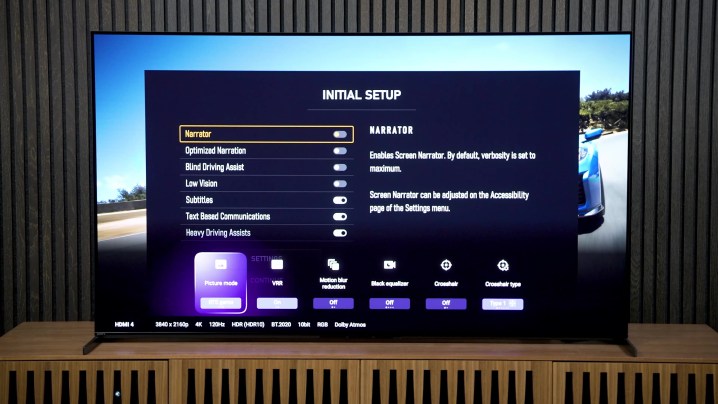
Does that make the A95L an outstanding TV for gamers? Well, I think for the vast majority of people playing console games, yes. But gaming enthusiasts? There’s sure a lot here to love, and the picture quality and responsiveness in game mode appear excellent to me. But there are performance facets — deep stuff — that I’m just not hip to. I’ll leave it to the hardcore gaming channels to tear this thing apart, but I know that I, personally, am not left wanting for anything. Except for one more HDMI 2.1 port — or at least for one of them to be divorced from the eARC port.
A note on Dolby Vision
Since I published my video review on the A95L, I’ve been made aware that some reviewers and owners of this TV have experienced a handful of bugs, mostly related to how Dolby Vision content is handled when delivered via HDMI. I have since tried to duplicate some of these issues and, like Sony, I’ve not been able to duplicate them all. While I have seen the TV stutter twice and I had initial problems with audio output via the TV’s eARC port, it has operated smoothly since its last firmware update and a subsequent factory reset. While I did observe some measurable low-luminance color shift with Dolby Vision content when delivered via HDMI — in my case via an Apple TV — the effect is so minute that it is not likely to be picked up on by most viewers. What I observed was through careful comparative evaluation, and it was, in my opinion, very slight.
While it is fair to expect the A95L to perform to exacting standards — especially considering its price — my understanding is that the use of a new system-on-a-chip comes with it some engineering challenges that Sony is actively working on. Given Sony’s historical handling of such matters, I have confidence any lingering bugs — which are not widespread and only experienced by a few users — will be ironed out within a few months, if not sooner.
The takeaway
This TV is just next-level amazing. The A95L doesn’t just deliver the wow — it delivers the whoa.
While I might discover more quirks over the next few months, it’s hard to imagine anything surfacing that would change my stance that this is the best consumer display that’s ever been made. Does it beat the competition by a country mile? In terms of picture quality, no. The S95C and LG G3 get very close. And, for reasons we’ll discuss in an OLED TV shootout that will be forthcoming, there are a number of reasons the A95L here may not be the right TV for you — cost among them. You’re looking at between $2,800 and $5,000, depending on size.
But if you want the best? In my opinion, this is it. The A95L is stunning. Hats off to the engineers at Sony who worked on getting the processing on this TV dialed in. The bar has been raised, and I look forward to seeing others try to reach it in 2024.
Editors' Recommendations
- Best Sony TV deals: Save on best-in-class 4K TVs and 8K TVs
- Sony debuts the Bravia 9, its brightest 4K TV ever, alongside new 2024 models
- Best OLED TV deals: Save on LG C3, Samsung S90C, and more
- Best LG C3 deals: Get up to $1,000 off the popular OLED TV
- What is QD-OLED? The hybrid TV tech fully explained


